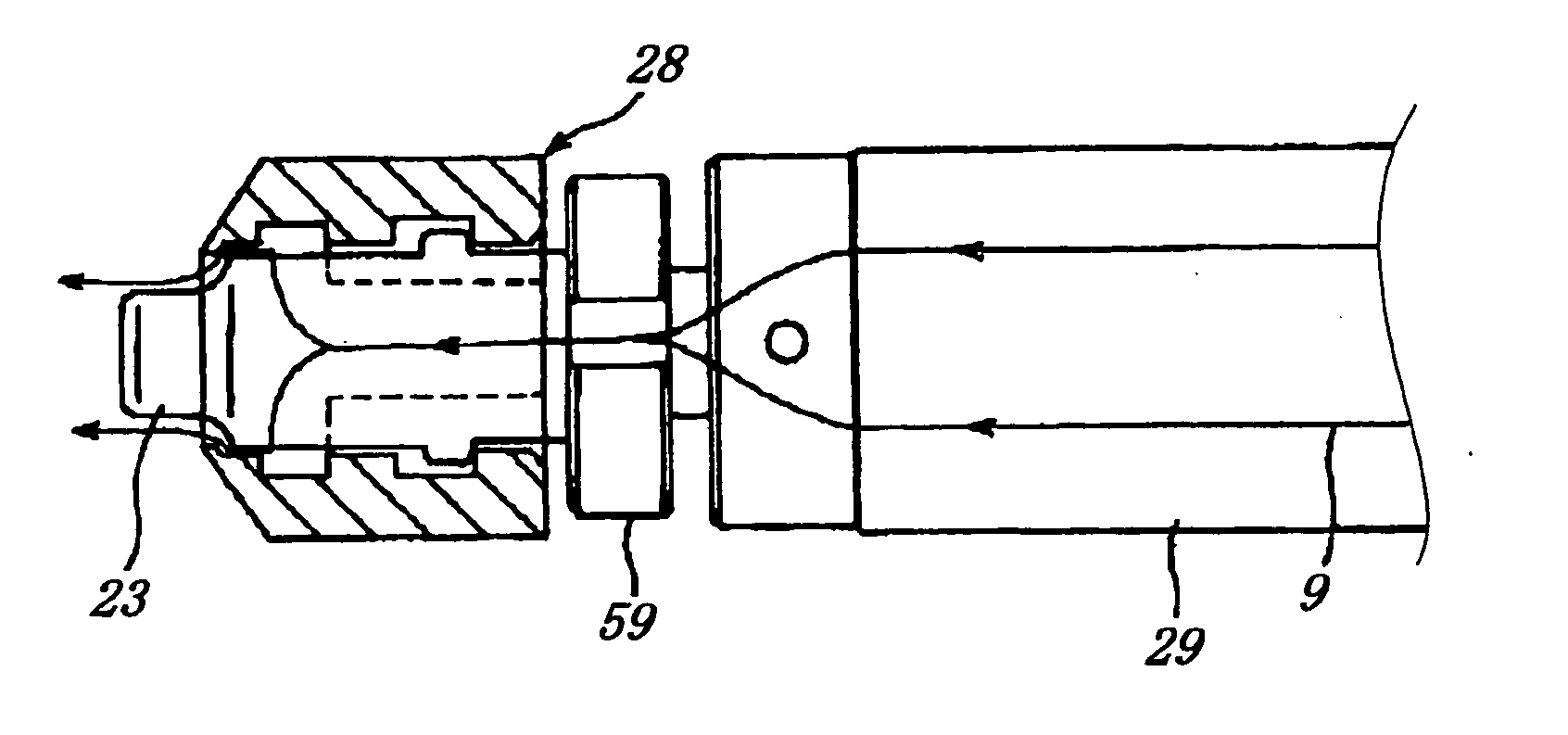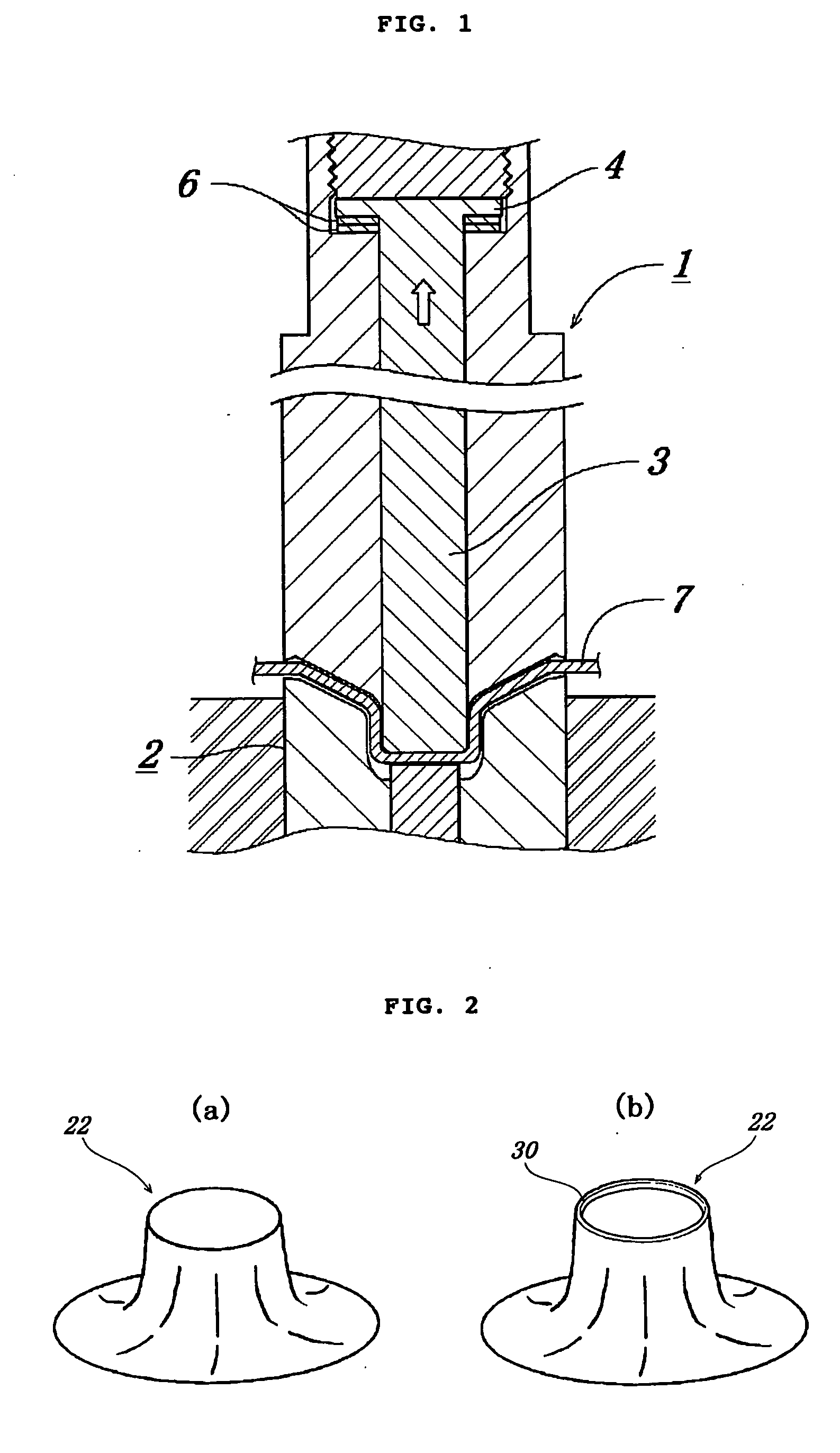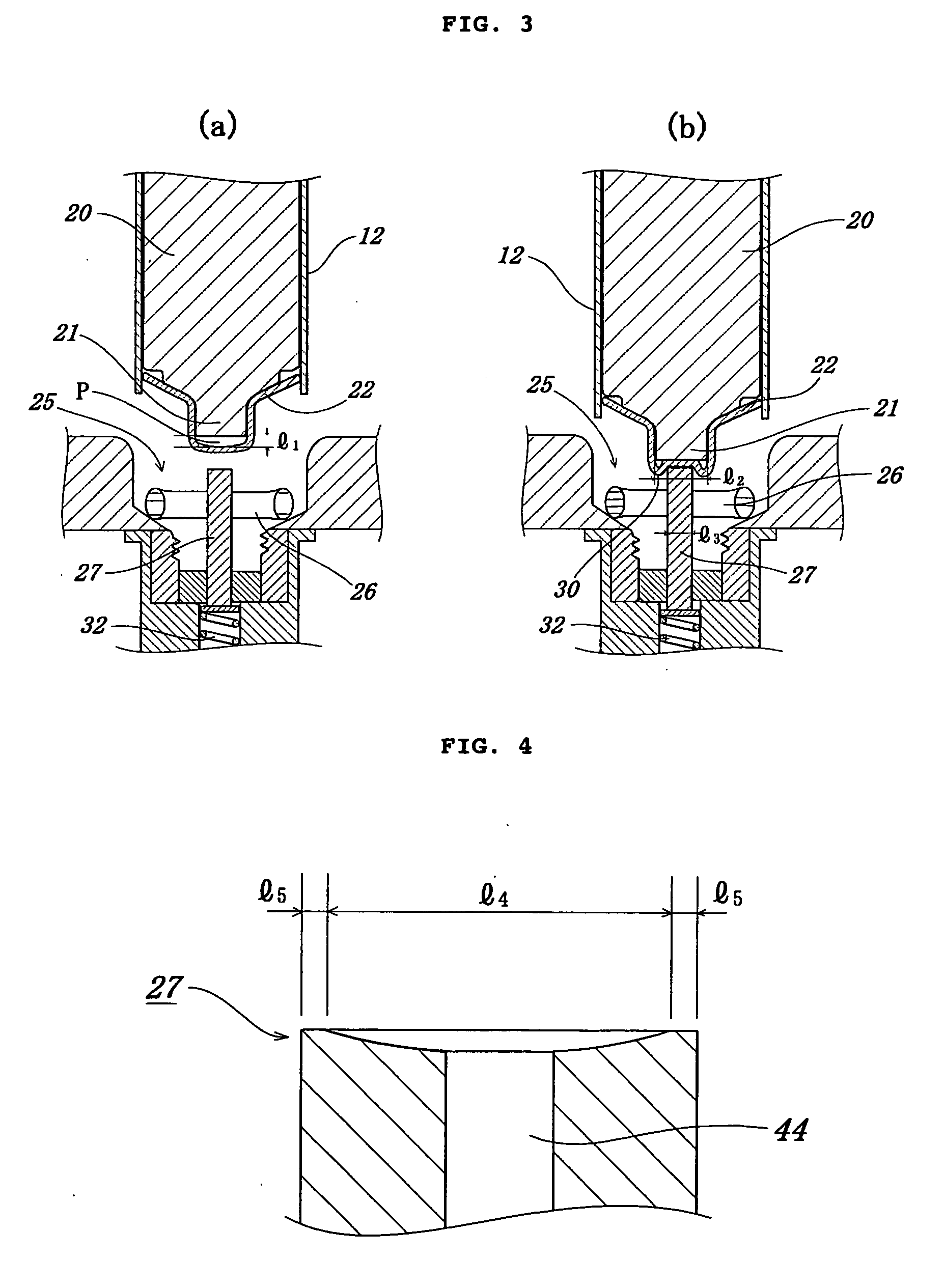Method for forming head part of closed-type tube, method for manufacturing closed-type tube, and closed-type tubular container
a technology of closed-type tubes and head parts, which is applied in the direction of rigid containers, turning machine accessories, drawing profiling tools, etc., can solve the problems of difficult opening for use, the ability of these portions to protect contents, and the lower shape restoration capacity of aluminum tubes
- Summary
- Abstract
- Description
- Claims
- Application Information
AI Technical Summary
Benefits of technology
Problems solved by technology
Method used
Image
Examples
embodiment
[0098]A tubular body part for a body diameter (l6) size of 25 mm and an original sheet for a closing material were manufactured by the methods described in the aforementioned implementation mode.
[0099]Deep drawing was then conducted by using a punching machine. In the course of deep drawing, three types of closing materials were prepared: (i) a washer was not screwed on a holepin; (ii) one washer (thickness 0.4 mm) was screwed; (iii) two washers were screwed. A total of 18 closing materials (6 of each type) were manufactured.
[0100]The height of the convex section of the manufactured closing materials was measured and an average value was found. The respective values were as follows: (i) 12.88 mm, (ii) 12.44 mm, and (iii) 12.09 mm.
[0101]The tubular body part was then placed on the mandrel of the head-molding machine shown in FIG. 3(a), the above-described closing materials were successively fitted on the engagement section of the mandrel, and head parts were formed on the tubular bod...
PUM
| Property | Measurement | Unit |
|---|---|---|
| thickness | aaaaa | aaaaa |
| diameter | aaaaa | aaaaa |
| diameter | aaaaa | aaaaa |
Abstract
Description
Claims
Application Information
 Login to View More
Login to View More - R&D
- Intellectual Property
- Life Sciences
- Materials
- Tech Scout
- Unparalleled Data Quality
- Higher Quality Content
- 60% Fewer Hallucinations
Browse by: Latest US Patents, China's latest patents, Technical Efficacy Thesaurus, Application Domain, Technology Topic, Popular Technical Reports.
© 2025 PatSnap. All rights reserved.Legal|Privacy policy|Modern Slavery Act Transparency Statement|Sitemap|About US| Contact US: help@patsnap.com



